This feature is from the February 2020 issue of Apollo, published before the Covid-19 lockdown. The Musée Ingres Bourdelle in Montauban has now reopened, as of 16 May (weekends and bank holidays only).
After three years spent tightly under wraps, the Musée Ingres in Montauban, just north of Toulouse, has emerged from its chrysalis as a new entity, the Musée Ingres Bourdelle. Occupying the same building, an old four-square episcopal palace overlooking the river Tarn, the once old-fashioned institution has been given new life and now makes full use of its impressive site. The change of name meanwhile reflects the city’s desire to honour not just its most famous artistic son, the great early 19th-century painter and draughtsman Jean-Auguste-Dominique Ingres (1780–1867), but its second most famous too, the sculptor Emile-Antoine Bourdelle (1861–1929).
Montauban is a major-minor provincial city with complicated roots. A pilgrimage stop on the French route to Santiago di Compostela, it witnessed the Albigensian Crusade, spent 50 years as part of England’s French territories and, for a 70-year period, was a Huguenot stronghold that withstood a lengthy siege by Louis XIII’s troops. Its classical cathedral, which was started in 1692 and holds Ingres’s celebrated altarpiece The Vow of Louis XIII, was built to hammer home Catholic ascendancy. The city’s artistic heritage has not been so eventful, except that during the Second World War the Mona Lisa was hidden in a wine vault.
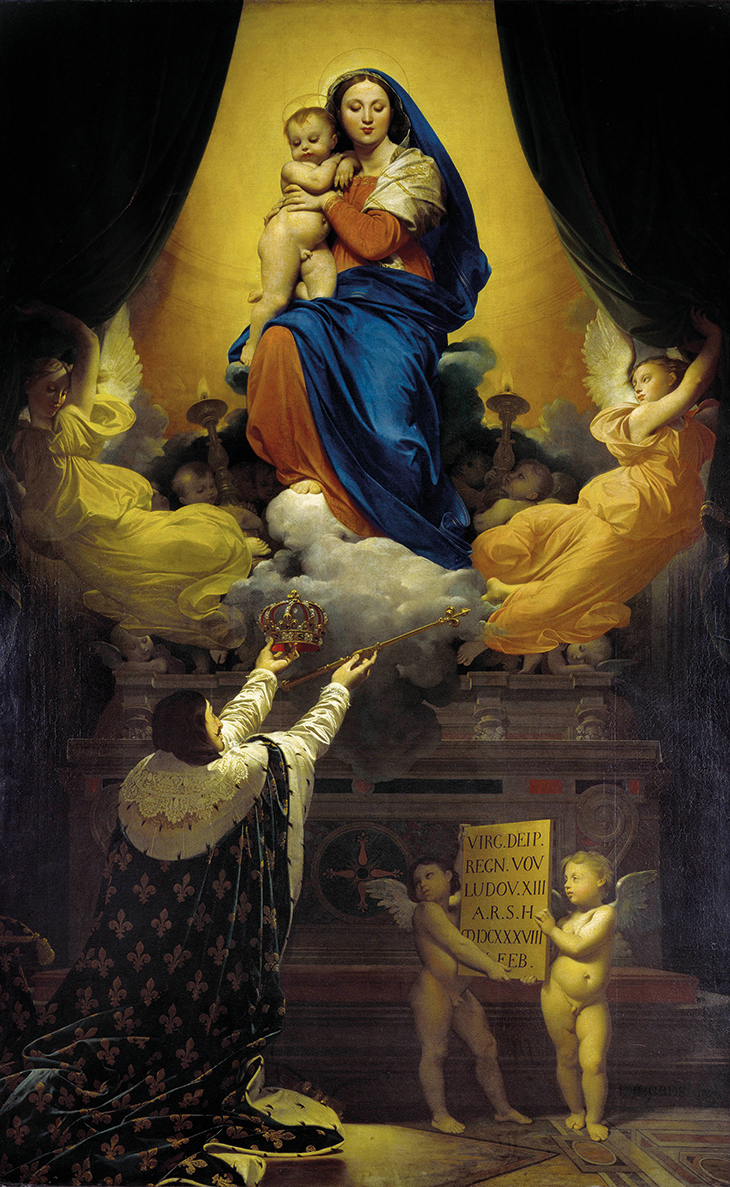
The Vow of Louis XIII (1824), Jean-Auguste-Dominique Ingres. Montauban Cathedral
The museum, then, is an important civic symbol, a status confirmed by the fact that it is outside the umbrella of France’s Réunion des Musées Nationaux group. The €13.1m needed for the restoration came from a conglomeration of local, regional and national sources, with funding from sources in Occitanie accounting for the bulk of it. What the money has enabled is a more rational and internally expanded building: there are two new escalators to aid circulation; the roofs have been renewed; an upper floor has been retrieved by redividing a double-height space; the grand rooms have been restored (including one for which Ingres’s father had provided the plasterwork); an auditorium, library and tearoom have been added; and the administrative offices have relocated. As a result, the museum has gained 30 per cent of display space.
The museum was closed for three years, but the process was much longer in the planning. The original structural investigation took place in 1990 and piecemeal advances inched slowly towards the competition to redesign the building itself in 2011, won by Bach Nguyen Architecture. During the closure much of the collection went into storage, while 500 pieces were lent both nationally and internationally: there were, for example, significant loans to three museums in China and to Milan. The break in normal proceedings also allowed for the restoration of 500 further works. The result of the whole project means that the museum hopes to double its visitor numbers, from some 40,000 annually to 80,000. It also hopes, in the words of its director Florence Viguier-Dutheil, who has been there since she joined as a curator in 1988 and so has witnessed every step of the restoration, both to ‘reposition Ingres among the French masters’ and ‘give Bourdelle the exposure his work deserves’.
Bourdelle might be the harder of the two aims to realise. Born in Montauban in 1861, he was a sculptor who straddled the differing aesthetics of the late 19th and early 20th centuries. Although he collaborated with Rodin for 15 years from 1893, his work is less classical in inspiration; he was adept at both heroic sculpture that recalls G.F. Watts and at art deco work. He taught both Matisse and Giacometti.
In 1949 Bourdelle’s former studio in Paris was inaugurated as a museum, and it holds the bulk of his work. Montauban, however, is home to his first public commission, a memorial to the dead of the Franco-Prussian War, erected in 1902, which dominates a traffic intersection just outside the museum walls. The museum itself holds the greatest number of his works outside Paris: 68 sculptures and more than 100 works of graphic art.
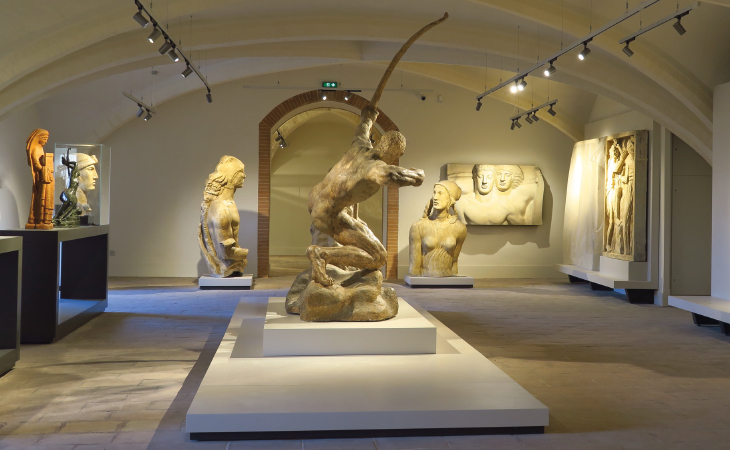
A large plaster version of Herakles the Archer (1909), by Emile-Antoine Bourdelle, is the centrepiece of one of the museum’s newly renovated galleries
The new-look museum dedicates a suite of basement rooms that used to be part of the building’s medieval fortified lower levels to his work. The most notable piece is a large plaster version of Herakles the Archer (1909), a work whose latent force – the kneeling hero braces one leg on an outcrop of rock as he pulls his bow to shoot the Stymphalian birds – recalls both Watts’s Physical Energy of 1902 and Étienne-Maurice Falconet’s celebrated sculpture of Milo of Croton from 1754. The fact that Bourdelle gave his figure the name of Herakles rather than Hercules indicates that he wanted his sculpture to stand for an archaic, rather than a refined, sense of power.
Something of the same energy, although mental rather than physical, can be felt in two of his busts in the collection: one of Beethoven, a figure who fascinated him and of whom he made around 80 representations; the other a stylised portrait of Rodin for which he leant heavily on Michelangelo’s Moses. That rawness, Romantic in its inspiration, is, however, absent in the square plaster reliefs he made in 1912 for the facade of the Théâtre des Champs Elysées. His pared figures in deep relief representing sculpture and architecture, tragedy, comedy, music and dance show Bourdelle as he transitioned from his more primal mode to art deco elegance. They demonstrate, too, his justification for stylistic breadth; sculpture, he asserted, is ‘an architecture of human forms […] an architecture of all the passions of the heart and all the impulses of the soul’.
While Bourdelle may now have his name attached to the museum, Ingres remains its leading light. The painter left the region at the age of 17 and returned only once, for the dedication of The Vow of Louis XIII in Montauban cathedral in 1824, but in 1851 he bequeathed various pictures and antiquities from his own collection to the then Musée de Montauban. At his death in 1867, largely through the urging of his executor and disciple, the Montauban painter Armand Cambon, the museum received a further bequest of 4,500 drawings, 20 paintings and personal objects such as Ingres’s violin and armchair. The museum now holds 44 of his paintings; only the Louvre, with 50, has more.
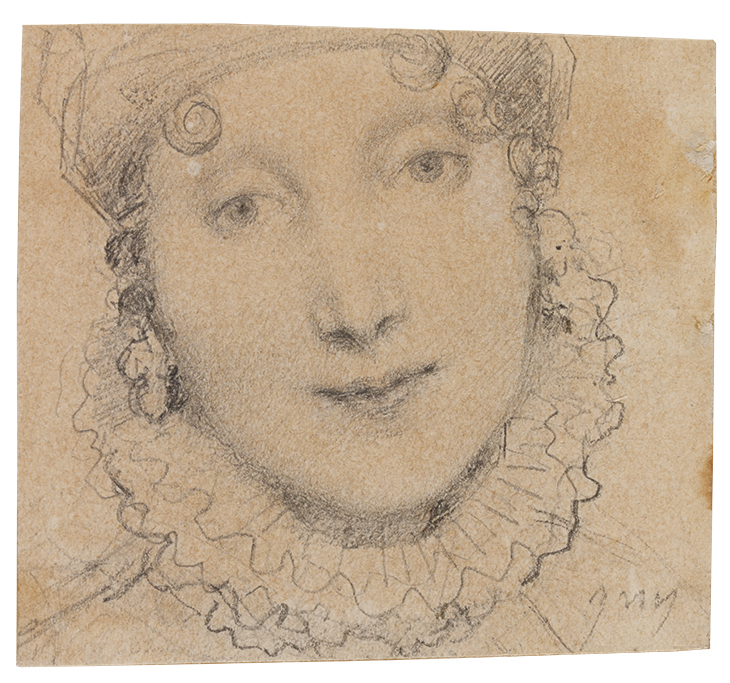
Study for portrait of Caroline Murat (1814), Jean-Auguste-Dominique Ingres. Musée Ingres Bourdelle, Montauban. Photo: Marc Jeanneteau
The revived museum is at pains to place Ingres among his antecedents and descendants. There are, for example, pieces from his own collection that reveal his surprisingly ecumenical tastes – a predella panel by Masaccio’s collaborator Masolino showing a scene from the legend of St Julien l’Hospitalier, and a portrait of a man from the school of Van Eyck. Both of these – one a southern ‘primitive’, the other a northern – reveal Ingres’s willingness to look beyond antiquity and Raphaelesque classicism for his models. Nevertheless, another of the items bequeathed to the museum is a small reliquary the painter had made to house fragments of bone removed when Raphael’s body was briefly disinterred in 1833 (an episode that had been treated by one of Ingres’s greatest contemporaries, Balzac). Ingres had petitioned the Pope for permission to keep this grisly memento of his hero.
There are works by some of the most accomplished Salon painters of the succeeding generation who were inspired by Ingres, including Théodore Chassériau, Jean-Hippolyte Flandrin, and Jean-Léon Gérôme. For its opening display the museum has also borrowed a series of paintings to show how Ingres’s influence reached into the 20th century by way of Degas, Maurice Denis and Picasso.
Where the depth of the museum’s Ingres holdings really comes to the fore, however, is in tracing each element of what was an extraordinarily multifarious career. The painter is traditionally held as an exemplar of neoclassicism and a forthright anti-Romantic, with Delacroix as his antithesis. However, it is a model that holds true for just a short period of his working life, essentially the years 1787–1812. His other styles incorporated full-blown Romanticism, Napoleonic cult images, orientalism, Troubadour medievalism, society portraiture, and both erotic and religious art.
The one strand that remained consistent was his belief, developed in Jacques-Louis David’s studio from 1797 to 1801, in the primacy of line over colour – which he formulated in his celebrated dictum that ‘Drawing is the probity of art’. One of the museum’s drawings is a head of Niobe, after an antique fragment, that bears the inscription: ‘Mon 1er dessin. Ingres 1789.’ The drawing is so accomplished, both in its surety of line and its shading, that the date, which would put the young draughtsman at nine years old, is likely to be a bit of later self-mythologising intended to stress his artistic adherence.
Nevertheless, the museum does have a pair of figure studies of the late 1790s–early 1800s, painted in David’s studio as he prepared to enter the Prix de Rome, that show how advanced were his skills. Ingres’s attitude towards anatomy was unequivocal; it was, he said, ‘That horrible thing, about which I can’t think without disgust. If I had to learn anatomy I […] would not have made myself a painter.’ However, he made himself a master of the outer human form, indeed one who saw it as the basis of his art: the majority of the figures in his subject paintings were drawn first as nudes and only later, when their poses had been tweaked and perfected, given clothes. This mastery, and his sympathy with classical subject matter, was to win him the Prix de Rome in 1801: his first attempt the previous year had seen him come second.
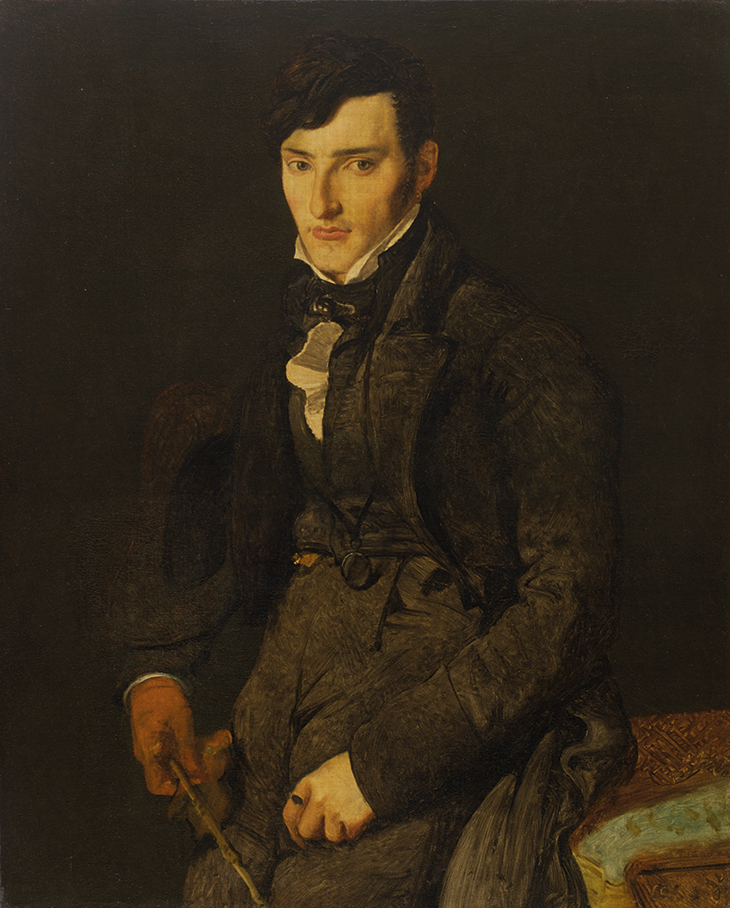
Portrait of Jean-Pierre-François Gilibert (1804), Jean Auguste-Dominique Ingres. Musée Ingres Bourdelle, Montauban
Political turmoil and the resulting lack of state funds meant that Ingres had to wait until 1806 before he finally took up his promised four-year residency in Rome. Part of the intervening period was spent as a painter of immaculate, sober and rather spare portraits. The museum’s examples include a stately portrayal – that verges on the jokey in its attempts at seriousness – of his friend the Italian sculptor Lorenzo Bartolini (1805), a figure who would go on to become Napoleon’s semi-official sculptor, and of another friend, Jean-Pierre-François Gilibert. In the latter work, the cursory handling of Gilibert’s black suit recalls the scumbled backgrounds of David’s portraits of the 1790s – notably that of the reclining beauty Mme Récamier, for which Ingres supposedly painted the accompanying Greek candelabra. At this early point in his career Ingres had not yet decided that he wanted his paint surfaces to be so smooth as to resemble ‘the skin of an onion’.
His eventual arrival in Rome also saw the first attacks on him as a painter of oddities. His marmoreal Byzantine portrait of Napoleon I on his Imperial Throne, shown at the Salon of 1806, was singled out: the critic Pierre-Jean-Baptiste Chaussard asked, ‘How, with so much talent, a line so flawless, an attention to detail so thorough, has M. Ingres succeeded in painting a bad picture? The answer is that he wanted to do something singular, something extraordinary…’ Ingres’s openness to the styles he saw being gathered in the Louvre by French troops as they looted their way across Europe was regarded as a weakness rather than a strength. Ingres’s response was anger: ‘So the Salon is the scene of my disgrace […] I knew I had many enemies; I never was agreeable with them and never will be […] the more I advance, the less their work will resemble mine.’
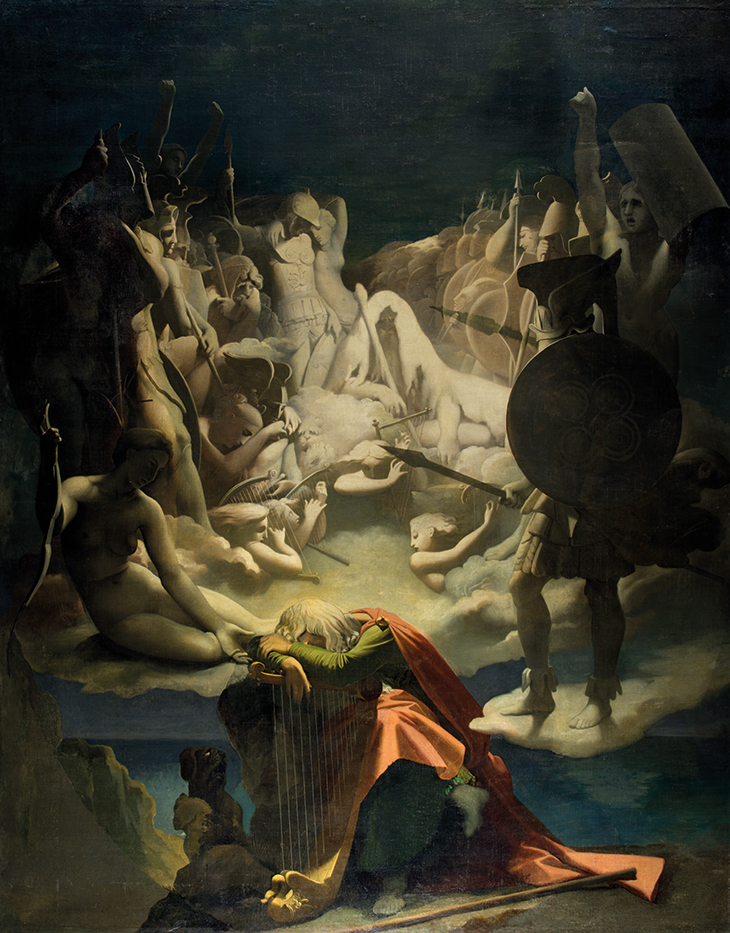
The Dream of Ossian (1813), Jean-Auguste-Dominique Ingres. Musée Ingres Bourdelle, Montauban.
He was in many ways true to his word. The museum’s largest Ingres painting is The Dream of Ossian of 1813, painted for the French governor of Rome, General Miollis. This bizarre, crepuscular scene shows the bard asleep on his lyre as a pallid troupe of Gaelic ancestors, heroes and maidens conjured from his imagination gather around him. The fictitious poet Ossian was a favourite of the Romantics and Ingres’s depiction owes something both to Girodet (a precursor in David’s studio) and his teeming Ossian Receiving the Ghosts of the French Heroes (1801), and in its two tiers, earthly and numinous, Raphael’s Vatican Ascension. The picture was painted just two years after another otherworldly but classical image, Jupiter and Thetis, and a year after Miollis commissioned Virgil Reading the Aeneid before Augustus, Octavia and Livia, and is a further example of his ability to meld different styles.
Ingres’s ‘gothic’ quirks were to make Salon success elusive until 1824, when The Vow of Louis XIII was widely praised (although not by Stendhal, who thought it exuded ‘the sort of material beauty which excludes the idea of divinity’). His long Italian sojourn from 1806 to 1824 was therefore largely financed by portraiture. This is the area in which the Montauban collection is lacking, though it does have a handsome late portrait of Madame Gonse (1852), known familiarly as La Joconde de Montauban. The sitter was the daughter of a friend of the painter, and it is a fine and frank representation of a bourgeois young woman. The composition is pyramidical, and she sits in a velvet armchair, chin on her hand – a motif that was almost Ingres’s signature – her clothes, jewels and furnishings beautifully rendered. It is the only Ingres portrait of the period in a French public collection.
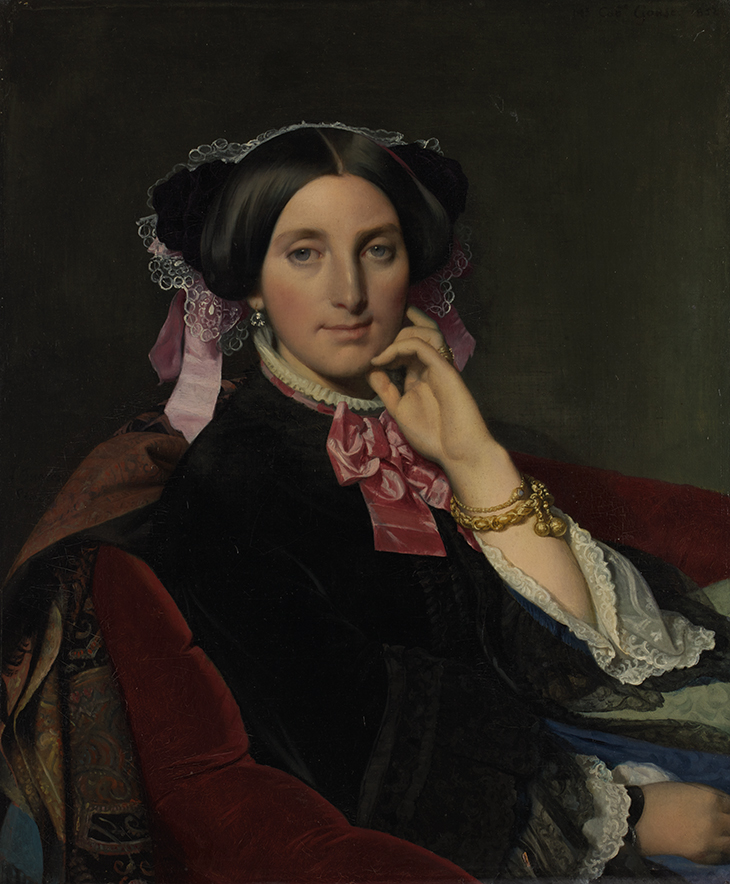
Portrait of Madame Gonse (1852), Jean-Auguste-Dominique Ingres. Musée Ingres Bourdelle, Montauban. Photo: Marc Jeanneteau
If the majority of Ingres’s major paintings – La Grande Odalisque, The Valpinçon Bather, Oedipus and the Sphinx, Portrait of Monsieur Bertin, The Apotheosis of Homer – are in Paris, Montauban’s collection of his drawings is unrivalled. Among them are various examples of the portrait drawings he would make of visitors to Rome, many of them milordi and assorted Grand Tourists. His gift for psychological compression is nowhere more evident than in the tiny, two-inches-square sketch of the head of Caroline Murat, Napoleon’s sister, whose portrait he painted in Naples in 1814. The necessity behind the pencil portraits irked Ingres, who would insist to would-be sitters who came knocking that ‘The man who lives here is a painter!’ Nevertheless, they show his preternatural gifts as a draughtsman, especially his ability to capture a physiognomy in a few strokes and his fascination with the folds and textures of materials.
Indeed, the museum’s collection includes various studies of stuffs: drapery studies, a superb black-and-white charcoal drawing of armour, and a charcoal of a dog lying down in which he treats the folds and fur of the pelt just as he would human clothing. It is, however, figure studies that predominate and reveal his obsession with working out poses from the naked model in the most minute detail before transferring them to canvas. There is, for example, a sheet of one of the stone throwers in The Martyrdom of Saint Symphorien (1827–34), in which the arm grabbing the projectile has been sketched in five different positions in the search for the perfect mixture of harmonious line and angle. As Ingres noted, ‘One must go after the modelling like a fly crawling over a piece of paper.’

Woman with Three Arms (c. 1859), Jean-Auguste-Dominique Ingres. Musée Ingres Bourdelle, Montauban. Photo: Marc Jeanneteau
This search could lead to some intriguing bizarreries, such as a developed oil-on-paper study (c. 1859) of one of the nudes for The Turkish Bath, in which the girl has three arms: two behind her head and one on her thigh. Or a pencil study of disembodied but elegant hands and feet (for his rather repellent painting The Golden Age; 1862) in which the limbs are disposed in a surreal caress. Their nearest antecedent is the simultaneously horrendous and beautiful studies of the severed heads and limbs of executed criminals made by Géricault in 1818–19 in preparation for painting The Raft of the Medusa. In a happy piece of synchronicity, the museum also holds a superb oil study by Géricault of the torso of the apex figure of that painting.
The hanging in the revivified museum is intelligently aware of such innumerable artistic confluences, and it makes for a rewarding experience, despite the fact that neither Ingres nor Bourdelle are easy artists. The three-year closure has proved time well spent, not least in that careful consideration was something Ingres himself prized: ‘It takes 25 years to learn to draw,’ he once said, and ‘one hour to learn to paint.’
For more information visit the Musée Ingres Bourdelle website.
From the February 2020 issue of Apollo. Preview and subscribe here.
Unlimited access from just $16 every 3 months
Subscribe to get unlimited and exclusive access to the top art stories, interviews and exhibition reviews.

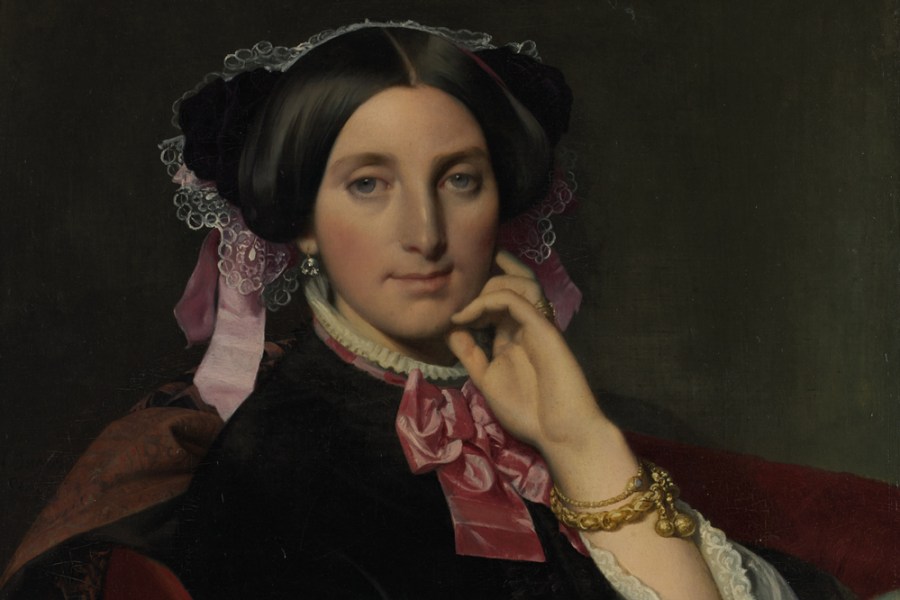
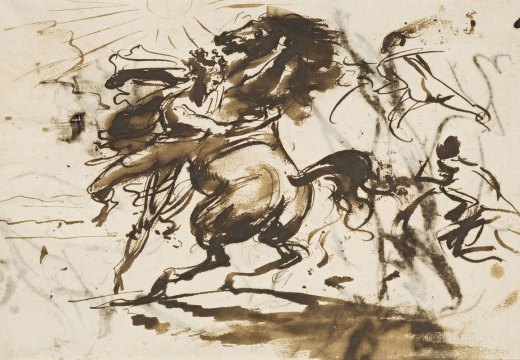
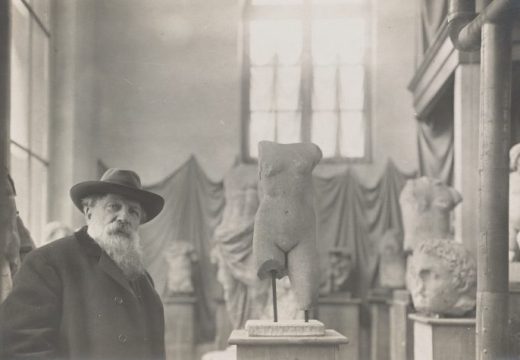










![Masterpiece [Re]discovery 2022. Photo: Ben Fisher Photography, courtesy of Masterpiece London](http://www.apollo-magazine.com/wp-content/uploads/2022/07/MPL2022_4263.jpg)
It’s time for the government of London to return to its rightful home